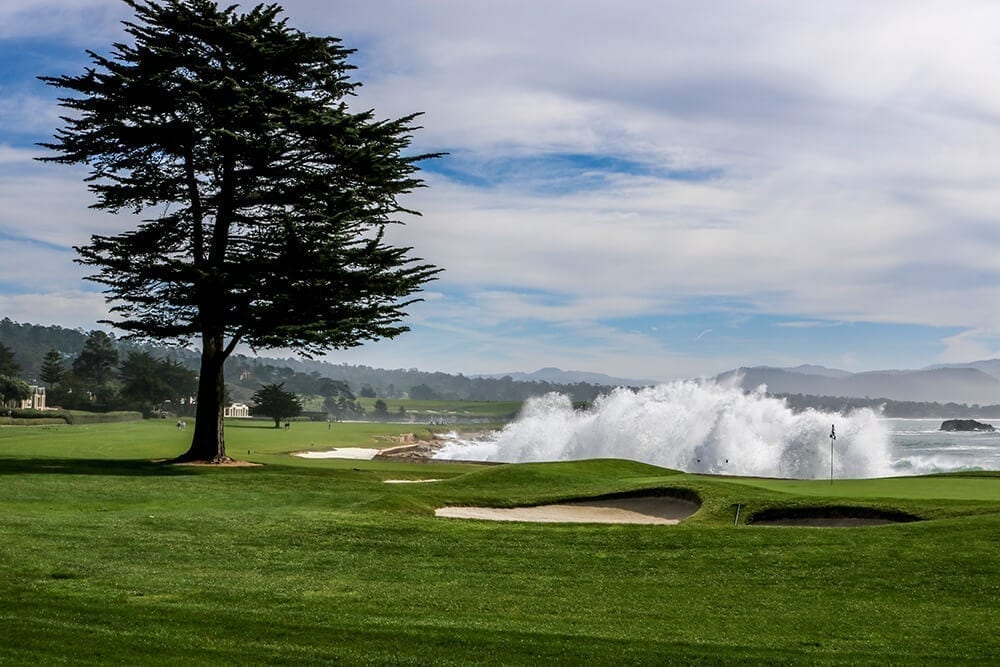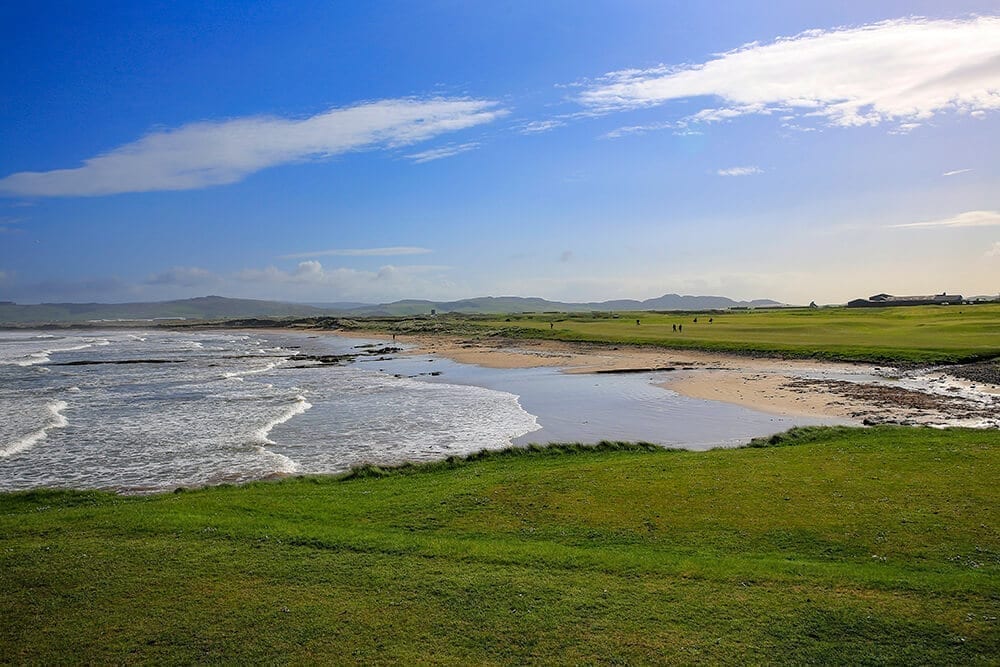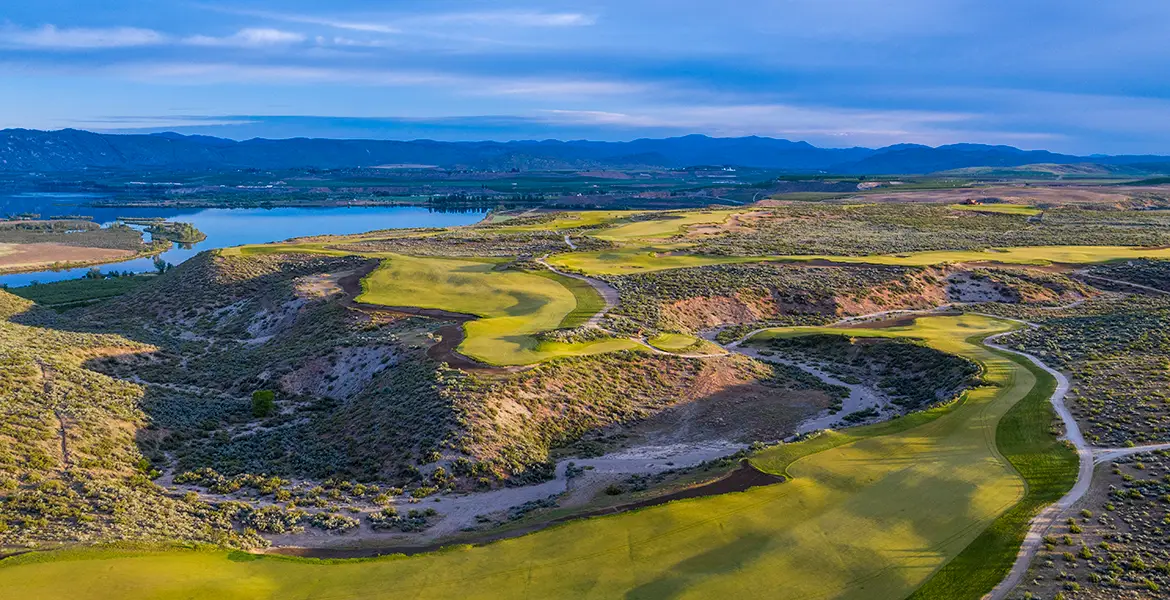In his fictional work The Old Man and the Sea, author Ernest Hemingway described the ocean as “something that gave or withheld great favors.” He also opined that the sea could do “wild or wicked things,” but that such things could not be avoided. While the novella chronicled the heroic and sometimes futile attempts of marlin fishing, those same ocean descriptions can also apply to golf.
A portion of the world’s most spectacular golf holes play alongside the sea—some of which even require players to hit shots directly over ocean waves. Much like the ocean described in Hemingway’s novella, the seas that are intertwined with these golf holes can give or withhold great favors.
As a tip of our sailor’s cap to the world’s seven seas, here’s a look at seven exceptional holes that bring the ocean into play. As one might expect, when the conditions are right these holes are no day at the beach.
Pebble Beach—Hole 18
Par Five, 543 yards
It would be egregious, possibly even incompetent, to not include the 18th hole at Pebble Beach on this list. After all, the crescent-shaped par five, which hugs the shore of Carmel Bay, intimidates players from the moment they step foot on the tee box. When the tide is in, waves crashing against the rocky cliff face provide both a visual and an audible reminder of the perils that await a tee shot that misses to the left or fails to cover the hazard on an aggressive line. When the tide is out, however, some errant tee shots can still produce playable lies for a golfer’s second shot—players just need to hit those shots from the pebble-coated shore, most likely with the bay lapping at their heels. Despite such dire circumstances, recoveries can be made. Just ask Brandt Snedeker, who found himself in that very scenario during the first round of the AT&T Pebble Beach Pro-Am in 2019 and scrambled to an unlikely birdie.

Punta Espada—Hole 17
Par Four, 358 yards
“Sometimes there’s nothing more thrilling than to hit your ball and see it fly over something,” course architect Bill Coore once said. It’s a philosophy that Jack Nicklaus clearly embraced with the design of the 17th hole at Punta Espada Golf Club at Cap Cana in the Dominican Republic. The short par four ranks as the third easiest hole on the course, even though drives hit from almost all of the tee boxes have to carry an inlet of the Caribbean Sea. Fortunately, well-struck drives are all but certain to clear the water—a carry of less than 175 yards is all that’s needed from the tips—so players wielding fairway woods or drivers can breathe easy knowing that their tee shots are likely to land on solid ground. The drive on this hole may deliver a thrill; however, the scarier shot is the one that comes next, which requires golfers to take aim at a green set dangerously close to the water’s edge.

Pacifico—Hole 3B “Tail of the Whale”
Par Three, 181 yards
The most dramatic and memorable hole at Punta Mita Golf Club sometimes takes multiple hours to play. The alternative hole to the Pacifico course’s first par three plays to an island green that is set out some 200 yards from the shoreline and requires a tee shot that’s hit over the Pacific Ocean. The island green is actually connected to the mainland by a spit of rocky terrain that can accommodate golf carts—but only when the tide is low enough that that spit of land is exposed. Players who wish to play the hole but who reach the tee box when the tide is in can still hit their tee shots, but they’ll need to return to the hole at the conclusion of their round to hopefully traverse the rocky natural pathway that leads to the green.

The Abaco Club—Hole 5
Par Four, 312 yards
The par-three 4th hole at The Abaco Club provides golfers with their first glimpse of the ocean, but it’s the 312-yard 5th hole that requires those players to navigate it. The par four, which doglegs gently to the left, epitomizes risk-versus-reward. A conservative layup of no more than 220 yards leaves a simple wedge shot to a large, boldly contoured green guarded by a single front-left bunker. An aggressive drive hit over the edge of the beach on the left (and above the fronds of a few scattered palm trees) could lead to a putt for eagle, but it could also yield a difficult recovery shot from the sand if those palm trees aren’t cleared. Drives that are tugged or sliced farther to the left will likely sink to Davey Jones’s locker.

Cypress Point—Hole 16
Par Three, 233 yards
Much like the 18th hole at Pebble Beach, the 16th hole at Cypress Point was destined for this list. The mammoth and imposing par three has served as the inspiration for dozens of holes that were designed after the iconic private golf club opened in 1928; and if ever a hole existed that encapsulated the notion that course knowledge can make a difference, it’s this one. Members (or those fortunate enough to tee it up at Cypress Point more than once) are likely to know that prudence—i.e. favoring the stretch of fairway that curves around from the left—will never cause much harm. First-timers (or brave and bold regulars), on the other hand, are likely to take dead aim at the green. That hero’s shot requires a carry over the cove that easily exceeds 200 yards, and when gusts blow in toward the tee boxes, players must take even more club. To say that the ocean comes into play on this memorable par three is an understatement as epic as the hole itself.
The world’s most exciting tee shot – the par-3 16th at Cypress Point Club offers players three different options: the 125 yard carry to the far left, the 180 yard carry to the left of the green, and the full 220 yard carry all the way to the green. As good as it gets. pic.twitter.com/vITxKP21BD
— LinksGems Golf Photos (@LinksGems) February 24, 2018
Teeth of the Dog—Hole 8
Par Four, 413 yards
There’s no shortage of golf holes on Teeth of the Dog that bring the ocean into play, but depending on who you talk to, the 8th hole is considered the one most influenced by the Caribbean Sea. As Robert Birtel, Casa de Campo’s director of golf explains, the ocean abuts the entire left side of the narrow fairway, while the right side is lined with a series of bunkers and out-of-bounds stakes just beyond. When the wind blows southeast—as it does half of the year—those gusts cut across the hole from the left; and with the wind blowing in that direction, players have to hit their tee shots down the coastline so the wind brings the ball back toward the middle of the fairway. Similarly, because the hole’s green is L-shaped, with a deep grassy hollow back right, players need to fire their approach shots toward the left side of the green, which promptly drops off into the ocean along the back and left side of the putting surface.

Macrihanish Golf Club—Hole 1
Par Four, 436 yards
It’s not uncommon for golf architects to create an introductory hole that eases players into their rounds. Clearly, Old Tom Morris didn’t believe in such a welcoming handshake—or if he did, he wasn’t in the mood for it when he redesigned and expanded Macrihanish Golf Club’s existing 10 holes into a full 18-hole layout in 1879. The course’s opening hole, which Morris designed from scratch, plays to an angled fairway that runs along the Atlantic Ocean’s shoreline on the right. There’s no avoiding the salt water; players must simply choose how much of an ocean carry they wish to take on with their tee shots. And with no driving range on site, players will find that their very first shot of the day comes with sizeable risk.

What other holes that bring the ocean into play come to your mind?






